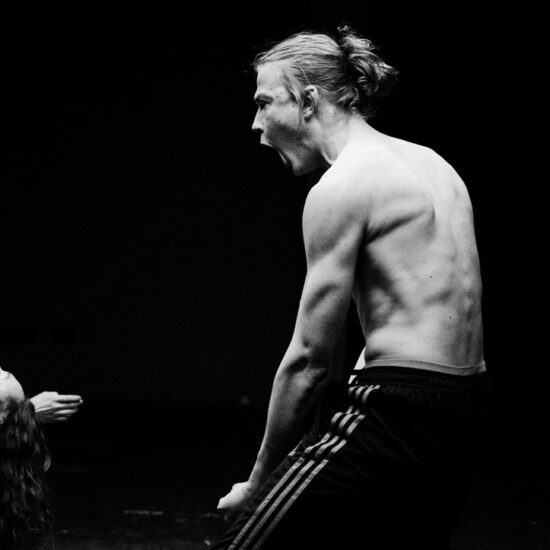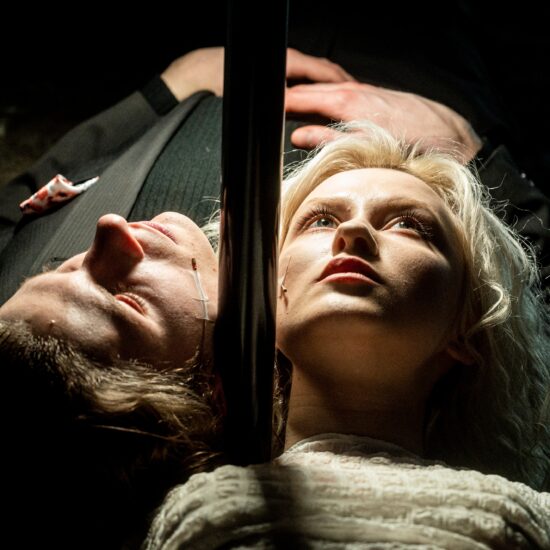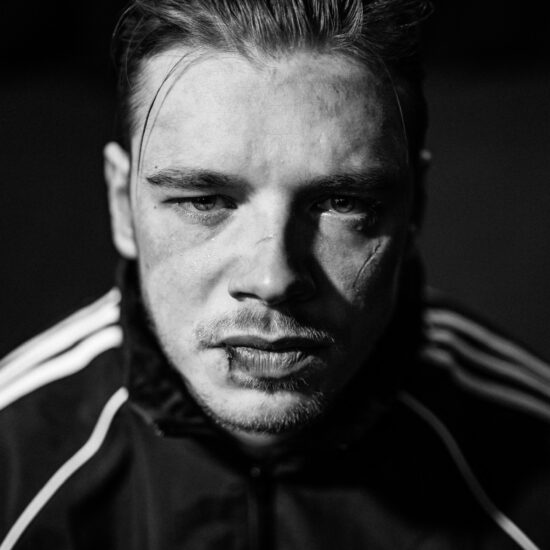A MIDSUMMER NIGHT’S DREAM
Director Oskaras Korsunovas: When we say “Midsummer Night’s Dream”, we usually imagine a costume fairy-tale or hear Mendelssohn’s music at the Wedding Palace. In this performance we are trying to convey the phantasmagoric character of the play on stage. The audience will see a performance produced with minimal means. A board that makes up for both the set design and sumptuous costumes in the performance is a kind of oar leading to the spectator’s imagination. I find it important that as soon as the actors appear on stage, the spectators should not form any preconceived opinions, but just give vent to their imagination. The board behind which an actor is standing is not a shield, but a mirror reflecting the spectators’ stream of imagination. This performance is a continuous paradox reduced to a perimeter of four surfaces.
THEATRE CRITICS ABOUT “A Midsummer Night’s Dream”:
“With dramatic repetitions and many-layered images Korsunovas approaches a ritual and the shift of the eternal circle.
In “Midsummer Night’s Dream”, in addition to ardour and youth, the actors’ romantic devotion to their profession also takes effect. This time the director’s energy merged with the young actors’ already mature energy to form a unique phenomenon of contemporary theatre.”
Daiva Sabaseviciene. “Midsummer Night’s Dream” by Oskaras Korsunovas // Literatura ir menas, 31-08-1999
“Since the very first scenes the actors’ callisthenics acquires a metaphysical colouring, a precise inner rhythm, though the tempo of the performance is alternating. The director succeeds in revealing the primeval magic of theatre and provoking the spectators’ imagination into making the most surprising discoveries. Paradoxically, the minimalism of means of expression creates an impression of total theatre, in which nothing is impossible. In “Midsummer Night’s Dream” Korsunovas demonstrates enviable theatrical sensitivity, as he himself becomes both the choreographer and set designer of the performance.”
Valdas Gedgaudas, “Perfectly Polished” Shakespeare // Veidas, 25-11-1999
The creators of the “Midsummer night’s dream” are discussing with one deep – rooted tradition of our theatre. Metaphorical Lithuanian theatre is based on the inter-connection between real thing and actor. Things, their textures are widening the field of association and create artistic illusion. Korsunovas releases the thing from its real associations and uses it as an abstract object, which is meant to help for acting. It is radical decision. It reveals the act of creation of the scenic image itself, and this act becomes both open and magic. Planed off plates become the working tools for actors, enables them to create endless scenic images. With the help of these plates actors describe the acting places, “dress up” the characters, give them a certain feature and render their relationships. From that point of view the artistic principle of Oskaras Korsunovas’ theatre resembles to universal laws of Meyerhold’s bio-mechanics, that were discovered during his pedagogical praxis. <…> Young creators of the performance answered to the question “what is the “midsummer night’s dream” very simply. It is theirs own youth, being romantically and wildly rendered about with the help of the characters of Shakespeare’s characters. The characters of the fantastic woods or traveling actors. These masks uncovers individuality, temperaments and artistic abilities of each actor. It is obvious, that the collision and situations of the Great Writer are well known for the former students from their own life. That’s why they are looking up to their characters with the hint of self-irony. Misunderstandings of lovers, dreams and mischievous slap-sticks of their friends, innocent cheats and the science of acting itself-these are vital motives of the performance, providing it with full-blooded circulation.
Audronis Liuga. Different Same Theatre // 7 Meno dienos, 1999-12-03
“With amazing ease the director combines the visual expression that is directly related with twists and turns of comedy or acquires certain hues of an independent comical divertimento, and the verbal one – Shakespeare’s text. Words are not merely an additional stream of information; quite often a contrasting combination of a word and a situation, a word and a visual image, the meaning and intonation of a word produces additional comical effects. Instead of seeking to contrast two worlds – real and dream – rendered by the playwright, this time the director tries to melt down the reality in a dream. Everything what is happening on the stage looks like a dream of the characters and those who watch it.”
Rasa Vasinauskaite. And all for Nothing! For Hecuba! // Literatura ir menas, 11-12-1999
Set designer
Oskaras Koršunovas
Costume designer
Oskaras Koršunovas
CHOREOGRAPHER
Oskaras Koršunovas
ASSISTANT DESIGNER
Marta Vosyliutė
ARCHITECT OF SOUND CONSTRUCTIONS
Gintaras Sodeika
ASSISTANT CHOREOGRAPHER AND THE COACH OF MOVEMENT
Vesta Grabštaitė
Cast
BOTTOM - Andrius Paulavicius, Algirdas Gradauskas
DEMETRIUS - Rytis Saladzius
EGEUS, FLUTE, MUSTARDSEED - Nerijus Gadliauskas
FAIRY I - Rasa Kulyte
FAIRY II, PEASEBLOSSOM - Asta Jastremskaite
HELENA - Rasa Marazaite, Rasa Samuolyte
HERMIA - Airida Gintautaite
HIPPOLYTA, TITANIJA I - Alina Zujyte
LYSANDER - Darius Gumauskas
PHILOSTRATE, QUINCE - Gintautas Ryliskis
PUCK - Kristina Jakubauskaite
SNOUT - Sonata Visockaitė
SNUG, TITANIA 2 - Egle Valyte
STARVELING - Zivile Sliuzaite - Simkiene
THESEUS, OBERON - Mindaugas Lungis
TITANIA III - Karina Metrikyte
Premiere
1999 October 17



